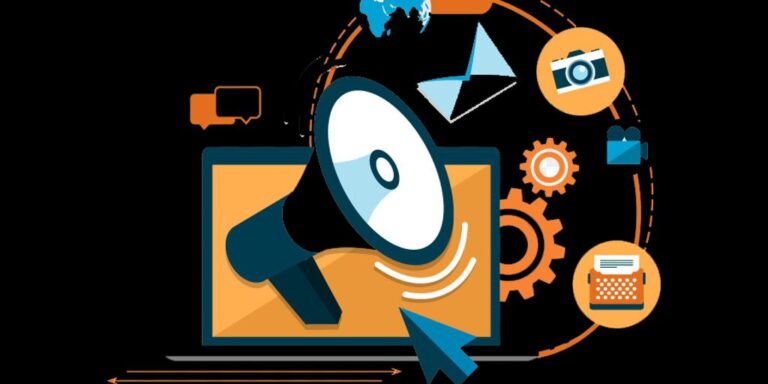The article explores the multifaceted risks associated with AI-generated fake nudes, delving into the technological, legal, psychological, and societal implications. As AI technology advances, the creation of convincing fake nudes has become more accessible, raising significant concerns about consent, privacy, and the potential for abuse. The analysis highlights the challenges posed by these developments and examines the responses from legal systems, communities, and technology sectors to mitigate the risks.
Key Takeaways
- AI-generated fake nudes present unique legal challenges, particularly in defining consent and addressing revenge porn litigation.
- The technology behind these images, especially GANs, allows for highly realistic manipulations, exacerbating ethical dilemmas and privacy concerns.
- Victims of fake nudes suffer significant psychological impacts, including mental health issues and social stigma, necessitating robust support systems.
- The proliferation of nonconsensual porn disproportionately affects women and highlights the need for stricter regulatory measures on platforms hosting such content.
- Emerging technological solutions and international collaborations are crucial in combating the spread of AI-generated fake imagery and protecting digital identity.
Understanding the Technology Behind AI-Generated Fake Nudes

How AI Creates Convincing Fake Images
AI technology has advanced to the point where it can create highly convincing fake nude images of individuals without their consent. By analyzing vast amounts of data from the internet, AI can manipulate existing photos or generate new ones that appear strikingly real. This capability raises significant ethical and legal concerns, particularly regarding consent and the misuse of personal images.
The Role of GANs in Image Manipulation
Generative Adversarial Networks (GANs) play a crucial role in the creation of synthetic media, including fake nudes. These networks involve two models: one that generates images and another that evaluates them. This process enhances the realism of the generated images, making them difficult to distinguish from authentic photos. The use of GANs in creating fake nudes is a deepfake phenomenon that continues to evolve, posing challenges to digital authenticity.
Technological Advances and Ethical Dilemmas
The intersection of technology and ethics becomes particularly contentious with the advent of AI-generated fake nudes. As AI tools become more sophisticated, the potential for abuse increases, prompting discussions on ethical considerations, responsible AI development, and the need for robust legal frameworks to protect individuals from non-consensual digital exploitation.
Legal Challenges and Victim Rights
Navigating Revenge Porn Litigation
In the evolving landscape of digital rights, navigating revenge porn litigation presents unique challenges. Victims often struggle to prove the intent to harm and the direct attribution of the images to themselves, which are crucial for a successful legal outcome. States have begun enacting criminal statutes to address these issues, but the legal landscape remains fragmented and varies significantly from state to state.
Defining Consent in Digital Imagery
Consent in digital imagery is complex and often misunderstood. The creation and distribution of AI-generated fake nudes, such as those from platforms like Nudify.Online, blur the lines of legal consent. Victims may not even be aware that their images are being used, making it difficult to claim violation of consent. This area of law is still developing, and clear legal definitions and guidelines are urgently needed.
Legal Recourse for Victims of Fake Nudes
Victims of AI-generated fake nudes have several avenues for legal recourse, often similar to those pursued in traditional revenge porn cases. These include tort claims such as false light invasion of privacy and intentional infliction of emotional distress. However, the defenses that creators of such content can assert pose significant hurdles. Legal professionals and lawmakers are continuously working to refine these laws to better protect individuals from this growing threat.
The Psychological Impact of Fake Nudes

Mental Health Consequences
The creation and distribution of AI-generated fake nudes can lead to severe mental health issues for victims. The emotional distress from being misrepresented in such a personal and invasive way can lead to anxiety, depression, and even PTSD. Victims often feel violated and powerless, which exacerbates the psychological impact.
Reputational Damage and Social Stigma
Victims of fake nudes often face significant reputational damage. The widespread sharing of these images can lead to public humiliation and a loss of professional opportunities. The social stigma attached to being a victim of such a crime can isolate individuals from their communities and support networks.
Support Systems for Victims
It is crucial to establish robust support systems for victims of fake nudes. These should include legal assistance, psychological counseling, and public education to combat the stigma. Effective support can help mitigate the long-term effects of this abuse and assist victims in recovery.
The Prevalence of Nonconsensual Porn
Statistics on Deepfake Distribution
Recent studies have shown a staggering 96% of deepfake content consists of nonconsensual porn, highlighting the severe misuse of AI in creating intimate imagery without consent. This predominantly targets women, with 99% of the victims being female. The technology behind these deepfakes, primarily Generative Adversarial Networks (GANs), has made it alarmingly easy to produce and distribute such content widely.
Impact on Women and Vulnerable Groups
The impact of nonconsensual porn via deepfakes is disproportionately large on women and other vulnerable groups. These individuals face not only the invasion of privacy but also significant emotional and psychological distress. The societal stigma and potential for harassment exacerbate the challenges faced by victims, making it a pressing issue of gender-based violence.
Rising Trends in AI-Generated Abuse
The trend in AI-generated nonconsensual porn is on the rise, with an increasing number of platforms inadvertently hosting such content. Regulatory measures are struggling to keep up with the rapid advancement and dissemination capabilities of this technology. This creates a pressing need for more robust detection and prevention mechanisms to protect individuals from such digital abuse.
The Role of Websites in Spreading Fake Nudes

Top Platforms Hosting Deepfakes
The proliferation of deepfake technology has led to a significant increase in websites hosting fake nudes. Industry analyst Genevieve Oh reported a more than 300% increase in such content from 2018 to 2022. The top platforms often feature nonconsensual intimate imagery, affecting public figures and ordinary individuals alike.
Regulatory Measures and Accountability
Efforts to regulate and hold websites accountable vary significantly. Some countries have implemented strict laws, while others lag behind. The need for global cooperation and consistent regulatory frameworks is critical to combat the spread of AI-generated fake nudes.
Techniques to Identify and Remove Fake Content
Advancements in AI also provide tools to detect and remove fake content. Techniques include:
- Image recognition algorithms
- User reporting systems
- Automated content moderation
These methods, however, require continuous refinement to keep up with evolving AI capabilities used to create deepfakes.
Protective Measures Against Deepfakes

Educational Initiatives to Raise Awareness
Educational initiatives are crucial in combating the spread of deepfakes. By informing the public about the signs of fake media and the potential harms, individuals can become more vigilant and less susceptible to deception. Workshops, online courses, and public campaigns can effectively disseminate this knowledge.
Technological Solutions to Detect Fakes
A variety of technological tools have been developed to identify and mitigate the risks of deepfakes. These include AI-driven detection software, blockchain technology for verifying authenticity, and digital watermarking to certify original content. The ongoing development of these tools is essential for keeping pace with the sophistication of deepfake technology.
Legal Protections and Privacy Rights
Legal frameworks are evolving to protect individuals from the harms of deepfakes. Several countries and states have introduced legislation that criminalizes the creation and distribution of deceptive deepfake content. Additionally, privacy laws are being strengthened to give individuals more control over their digital identities and to provide legal recourse for victims of deepfakes.
The Societal Implications of Fake Nudes

Influence on Gender Discrimination
The proliferation of AI-generated fake nudes significantly exacerbates gender discrimination, particularly against women. The creation and distribution of such content without consent directly contribute to a culture of exploitation and inequality. This not only affects the victims but also perpetuates harmful stereotypes and biases within society.
Effects on Teenagers and Young Adults
Young individuals are increasingly vulnerable to the psychological and social impacts of fake nudes. The exposure to or victimization by AI-generated fake imagery can lead to severe emotional distress, social withdrawal, and even impacts on educational and career opportunities. It is crucial to address these issues through robust educational programs and supportive measures.
Broader Cultural and Social Impact
The widespread availability of AI nudes has broader implications for cultural norms and social interactions. It challenges the very notions of privacy and consent in the digital age, leading to a diminished sense of security online. Efforts to combat this issue must include a combination of legal, technological, and societal measures to restore trust and integrity in digital interactions.
The Future of Digital Identity and Authenticity

Challenges in Online Privacy and Consent
The growing ability of AI systems to generate fake yet incredibly photorealistic content raises troubling questions regarding privacy, consent, and online authenticity. As we move forward, machine learning techniques will produce synthetic imagery and media that grows more indistinguishable from reality. This evolution necessitates a global shift towards adopting an affirmative consent mindset, not just in physical interactions but also in digital representations.
The Role of AI in Shaping Perceptions
AI’s role in shaping perceptions of reality and identity is becoming more pronounced. As AI content becomes fully customizable yet increasingly untraceable, broader societal risks loom. Users worldwide will likely demand greater transparency and control over their identity from platforms, devices, and generative models anchoring the algorithmic economy.
Strategies for Ensuring Digital Authenticity
To combat the risks associated with deepfakes and ensure digital authenticity, several digital tools and policy changes are required. Leveraging blockchain, metadata tracking, and digital watermarking are emerging techniques to certify real versus fake visual content. Additionally, platforms like Google Photos and Adobe’s AI attribution tool help authenticate and manage digital content, ensuring users can trust what they see online.
Global Responses to the Deepfake Phenomenon

International Laws and Regulations
Countries around the world are beginning to establish laws specifically targeting the creation and distribution of deepfakes. These regulations often focus on consent, privacy, and the prevention of harm. For instance, in the EU, the GDPR has been interpreted to offer protections against non-consensual deepfakes, emphasizing the right to personal data protection.
Collaborative Efforts to Combat AI Abuse
Global cooperation is essential in tackling the spread of deepfake technology. Various international organizations and coalitions are working together to develop standards and share best practices. This includes efforts to improve detection technologies and to educate the public about the risks associated with deepfakes.
Case Studies from Different Countries
Several countries have faced significant deepfake challenges:
- United States: Legislation has been introduced in several states to criminalize the non-consensual distribution of deepfake content.
- United Kingdom: There is ongoing debate about how existing laws can be adapted to better manage deepfake issues.
- India: Increased incidents of deepfake misuse in media have prompted calls for more stringent regulations.
The global landscape of deepfake regulation is complex and evolving, with each country adapting its approach based on cultural, legal, and technological contexts.
Technological Arms Race: AI vs. AI

Developing AI Tools to Counter Deepfakes
The development of AI tools to counter deepfakes is a critical aspect of the technological arms race. These tools use advanced machine learning algorithms to detect inconsistencies in digital media, helping to identify and flag potentially manipulated content. The effectiveness of these tools is continually improving, making them a vital component in the fight against AI-generated fake content.
Challenges in Keeping Up with AI Advancements
Keeping pace with rapid AI advancements presents significant challenges. As AI technology evolves, so too does the sophistication of deepfake creation tools. This constant evolution requires continuous updates and improvements in detection technologies, making it a relentless pursuit for cybersecurity experts.
The Balance Between Innovation and Ethics
The balance between innovation and ethics in AI development is crucial. While AI offers immense potential for positive change, its misuse in creating convincing fake nudes raises serious ethical concerns. > It is essential to develop AI responsibly, ensuring that advancements in technology do not come at the cost of privacy and authenticity.
The Economic Impact of Fake Nudes
Costs to Individuals and Businesses
The economic toll on individuals affected by fake nudes can be substantial, ranging from legal fees and therapy costs to potential job loss due to reputational damage. Businesses, particularly in the entertainment and media sectors, face brand damage and the costs associated with combating these deepfakes.
Impact on the Entertainment and Media Industries
The entertainment and media industries are particularly vulnerable to the disruptions caused by deepfakes. AI technology in the adult entertainment industry, such as platforms like Nudify.Online, leads with speedy, cost-effective, and realistic content creation. This not only impacts content personalization but also immersive experiences, altering the competitive landscape.
Economic Incentives Behind Deepfake Creation
The creation of deepfakes is often motivated by potential economic gains. These can range from the direct sale of created content to more nefarious uses such as extortion and blackmail. The ease of creating and distributing these images makes it a lucrative, albeit illegal, avenue for profit.
The exponential rise in hyper-realistic fake AI nudes creates disproportionate risks for women especially.
Public Perception and Media Influence

Media Coverage of Deepfake Scandals
The media’s portrayal of deepfake technology often emphasizes its potential for harm, overshadowing the instances where it has been used for legitimate purposes. This skewed coverage can alter public perception, making it difficult to discern the true impact of deepfakes. Public deceptions weaken society’s ability to govern itself, leading to a distorted view of both the technology and its implications.
Public Awareness and Misinformation
Despite widespread coverage, public understanding of deepfakes remains superficial. Misinformation about the capabilities and prevalence of deepfakes is rampant, complicating efforts to educate the public about the real risks and ethical considerations. A more nuanced consent mindset globally regarding not just physical relations but also digital representation could be pivotal.
Influence of Fake News on Public Opinion
The influence of fake news, amplified by deepfakes, poses significant challenges to public opinion. It gives another weapon to the powerful to say ‘It’s a deepfake’ about anything that people who are out of power are trying to use to show corruption. This manipulation of public opinion can have profound effects on democratic processes and societal trust.
Conclusion
The proliferation of AI-generated fake nudes presents a grave challenge to privacy, consent, and the integrity of personal identity. As AI technology continues to evolve, the ease of creating photorealistic fake images without consent poses significant risks, particularly to women and teens, who are disproportionately victimized. The potential for misuse in revenge porn, extortion, and the spread of misinformation underscores the urgent need for robust legal frameworks, technological safeguards, and a global shift towards a consent-based approach to digital interactions. The societal implications of these technologies are profound, demanding immediate attention to protect individuals from the invasive and damaging effects of deepfake technology.
Frequently Asked Questions
What is AI-generated fake nude imagery?
AI-generated fake nudes are realistic images created or manipulated by artificial intelligence to depict a person as nude without their consent, often using technologies like generative adversarial networks (GANs).
Is consent required for creating or distributing AI-generated nudes?
Yes, consent is crucial. Creating or distributing AI-generated nudes without the person’s explicit consent is a violation of privacy and can lead to legal actions against the perpetrators.
What legal challenges arise from AI-generated fake nudes?
AI-generated fake nudes can lead to revenge porn litigation, privacy violations, and other legal challenges as they often involve non-consensual image manipulation, posing unique issues for defining consent and victim rights in digital imagery.
How do AI-generated nudes impact victims?
Victims may suffer from mental trauma, reputational damage, harassment, and social stigma, which can have profound psychological impacts and necessitate robust support systems.
What percentage of deepfakes are nonconsensual?
According to research by Sensity AI, 96% of deepfakes involve nonconsensual intimate imagery, predominantly affecting women.
How has the prevalence of sites hosting fake nudes changed?
From 2018 to 2022, there was over a 290% increase in the number of deepfakes featured on the top 10 websites hosting such content, indicating a significant rise in the distribution of nonconsensual intimate imagery.
What can be done to protect against AI-generated fake nudes?
Protective measures include raising public awareness, developing technological solutions to detect and remove fake content, and implementing stronger legal protections and privacy rights.
What are the broader societal implications of AI-generated fake nudes?
These technologies contribute to gender discrimination, affect teenagers and young adults disproportionately, and pose broader cultural and social challenges by undermining digital authenticity and privacy.









